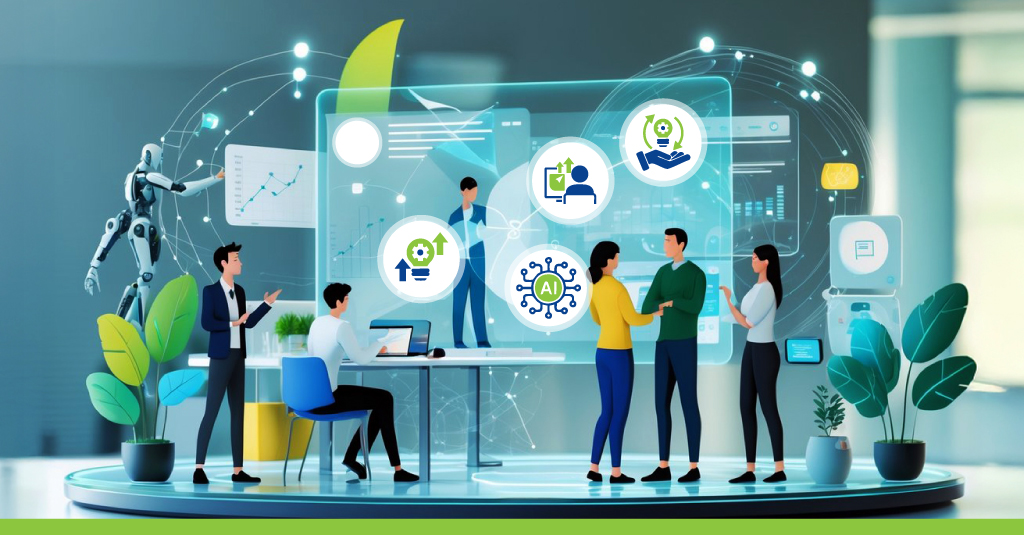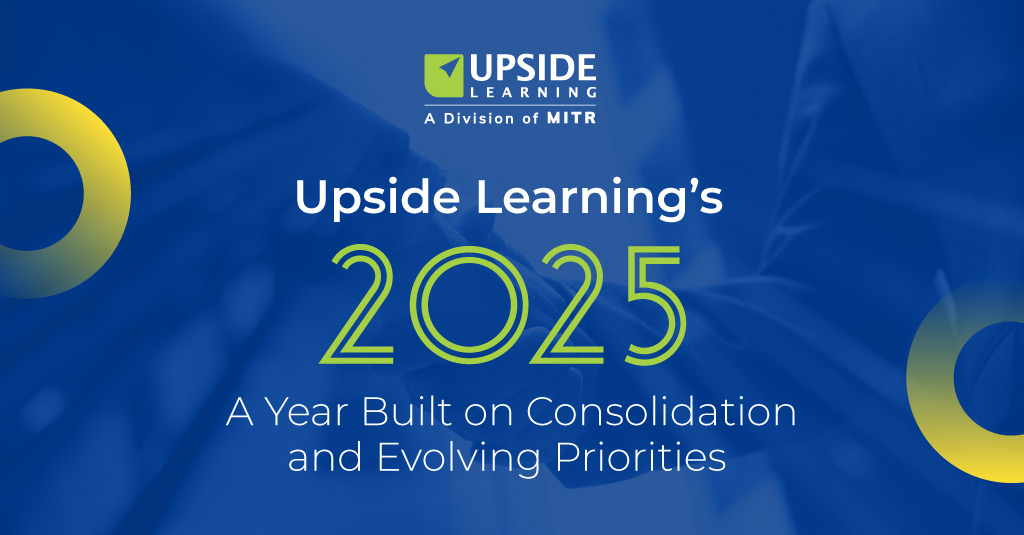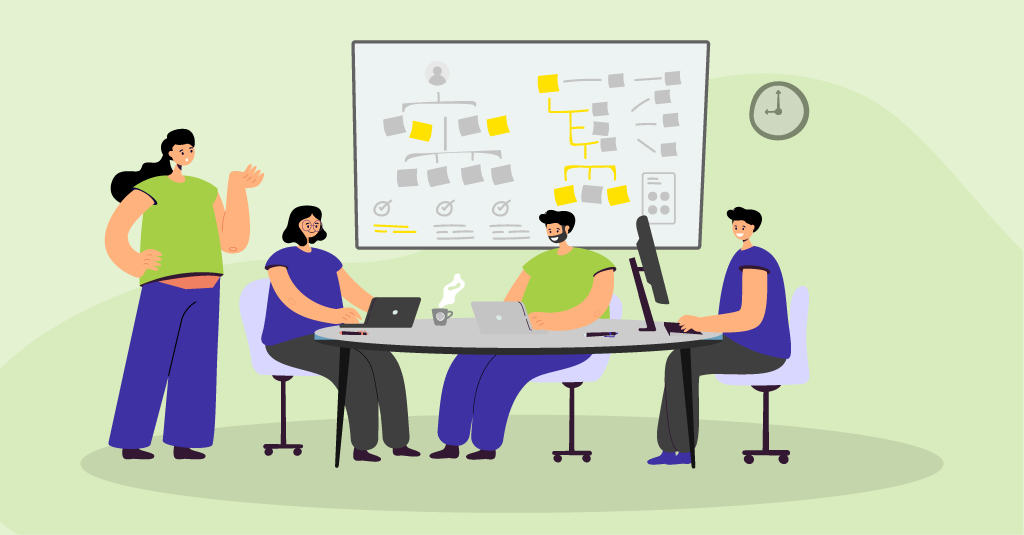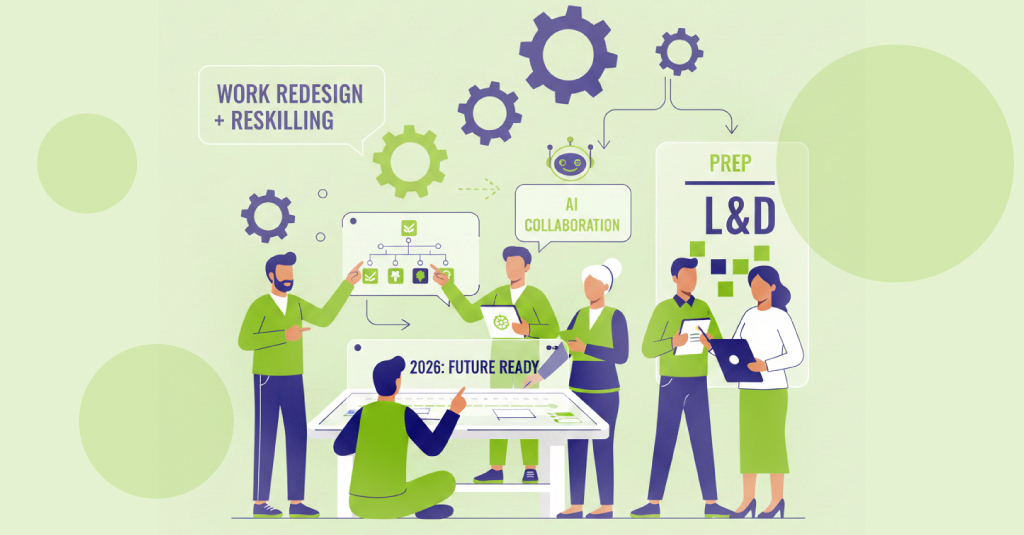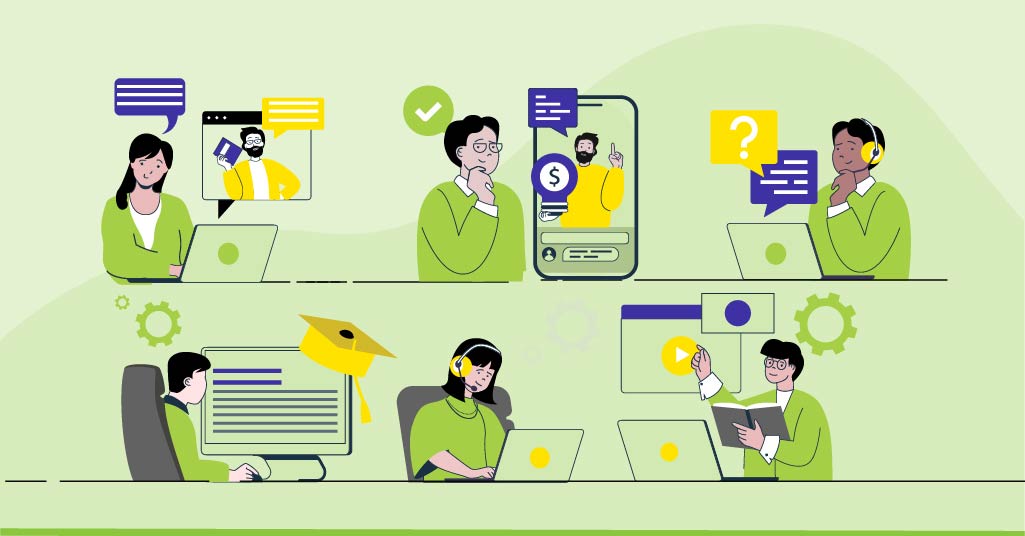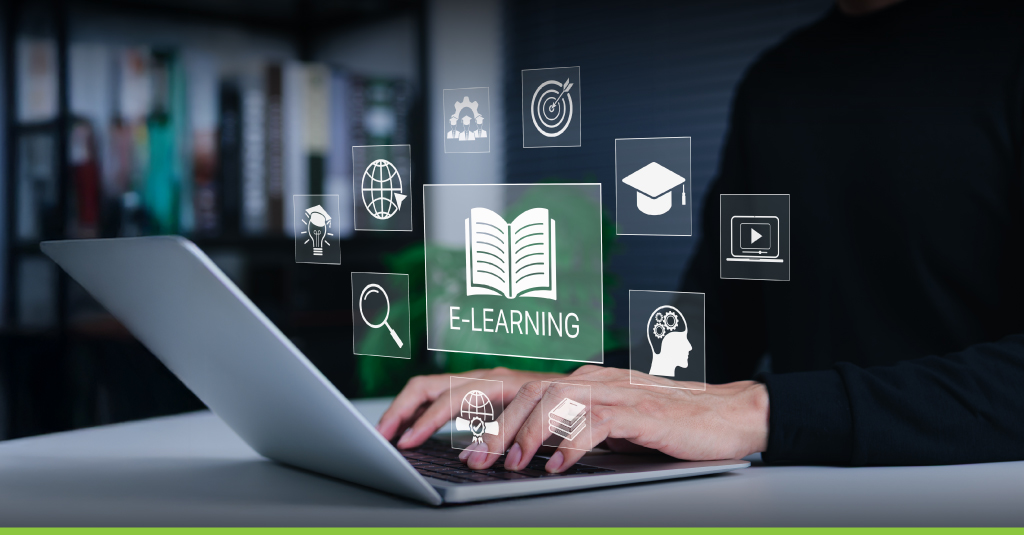2025 has shown us how quickly industries can change with the rise of Artificial Intelligence.
Complicated tasks can now be completed in minutes across all roles and sectors.
This almost overnight change has shown us how important adaptability is, as this is no longer an option, but an essential key to staying relevant.
Although technical skills still matter, their shelf life is shrinking fast.
The World Economic Forum’s Future of Jobs Report 2025 notes that 50% of the workforce has already completed training as part of long-term learning strategies, up from 41% in 2023.
This proves to us how organizations are acting fast in order to prepare themselves for the future of work.
So, what exactly are power skills, and how do they keep you ahead in the future?
To get that, let’s zoom out and see the bigger picture first. The shift we have seen this year isn’t just about better tools or smart machines; this is about reshaping how this works altogether.
This blog will give you a clear picture of how these decisions are made and how you can create a collaborative environment within your team- the very foundation that will redefine work. And this is the moment where power skills step in as the real differentiator.

What are Power Skills and Why do They Matter in 2025?
Once seen as a good to have attribute, has now turned into the backbone of the workplace in today’s economy.
Beyond just technical skills, power skills help you read situations and adapt anywhere.
Sure, AI can handle the repetitive stuff, but your uniquely human moves? Untouchable. This is why industries are placing power skills at the center of growth.
Among these power skills, 3 stand out as the most critical skills in 2025:
-
Analytical Thinking
-
Resilience
-
Creative Agility
These power skills have created a bridge between a rapidly growing technologies and human ability, resulting in better judgement and creativity.
So, let’s explore these skills one by one.

Analytical Thinking - The Bedrock of Decision-Making
Data is found everywhere – dashboards, reports, customer insights, etc. The real challenge is how to understand it and how to use it. This is where analytical thinking plays a major role.
This skill set proves beneficial in cutting through the noise and understanding the data pattern to make informed decisions.
This is not just important for data teams, but is also useful for a manager deciding budgets, an HR reviewing workforce trends, or a marketing manager analyzing campaign strategy.
Why it matters-
-
Fast shift requires a sharp focus
-
Relevance is still decided by humans
-
Strong analysis reduces errors
How to build it-
-
Relay your decisions on data, not opinions
-
Break down your problems into smaller steps
-
Challenge assumptions before making decisions
Analytical thinking shows the way, but how will you tackle the hurdles. Resilience- that’s what keeps you steady and moving.

Resilience - Thriving in Uncertainty
Now that you have a direction with analytical thinking, all you have to do is dodge the hurdles. But with rapid changes come unexpected setbacks and constant pressure that can easily hamper your progress.
Here, resilience comes into play, enabling you to create a steady, adaptive, and progressive flow. This power skill helps you see complications as opportunities for growth.
Why it matters-
-
Stabilizes the team to foster collaboration
-
With constant change, resilience maintains focus
-
Delivers results in uncertain conditions
How to build it-
-
Regular breaks, mental health support, and stress management
-
Lead problematic situations into opportunities
-
Mentorship programs to help navigate uncertainty.
If analytical thinking gives you a map, then resilience helps you weather the storm along the way. But a map and a steady hold alone can’t help you reach your goal.
So, to truly find your way, you need the ability to design the map itself, as the changing terrains.
That’s the role of creative agility: the power skill that helps you experiment with fresh ideas and design new paths.

Creative Agility – Innovating in the Age of AI
The workplace is shifting so fast that yesterday’s solutions rarely fix tomorrow’s problems. Just staying steady and focused isn’t enough.
Creative agility is what keeps you ahead. It lets you pivot quickly when things get messy, test fresh ideas, and spot opportunities others miss.
It’s about learning, experimenting, and creating your own answers, not waiting around for outdated ones to show up again.
Why it matters-
-
Generates ideas relevant to the organization
-
Teams adjust their approach without losing pace
-
Diverse perspectives spark better problem-solving.
How to build it-
-
Experiment with ideas before rolling out
-
Question to unlock new or different solutions
-
Brings in diverse voices to spark creativity
It may sound like all you need to do is understand data, handle challenges, and design a pathway to achieve your goals.
In reality, power skill development is far more complex.
You can’t learn these skills overnight, you need structured learning, steady practice, and real-world grind to make them stick.

How Upside Learning Helps Organizations Build Power Skills
Upside Learning partners with organizations to design digital rapid eLearning experiences that strengthen analytical thinking, resilience, and creative agility in practical, role-focused ways.
Here’s how we help:
-
Custom eLearning Programs: Modules made for your role, learning you can actually flex in real life.
-
Scenario-Based Learning: Dive into real-world simulations, make decisions, and practice, no risk, all play.
-
Microlearning Journeys: Bite-sized lessons over time, skills that stick without burning you out.
-
Continuous Support: Coaching and handy tools to keep your game sharp long after the course ends.
I can also make an even edgier version with witty references, something like “Rolex meets retro gaming” style, so it really clicks with your audience. Want me to do that?
And many more…
The result? Teams not only gain power skills, they also learn to make sharper decisions, staying focused in uncertain situations and adapting quickly.

Turning Power Skills into Everyday Strengths
These rapid changes have redefined how work gets done, and it continues to accelerate from there. Organizations that have adapted to these power skills are thriving in this competitive world.
With Upside Learning, organizations can build power skills through rapid eLearning solutions that replicate real business challenges.
They focus on designing practical approaches to understand how daily decision-making, collaboration, and growth work.
Take a look at how Upside Learning can help your workforce stay adaptable and future-ready.
FAQs on AI-Powered Skill Gap Analysis & Adaptive Learning
AI-powered skill gap analysis uses machine learning to assess current employee competencies and identify areas that need development. It supports more targeted training interventions.
By analyzing learner behavior and performance, AI delivers adaptive content aligned to individual skill needs and learning preferences.
With rapid changes in technology and workforce demands, real-time skill visibility is essential for proactive upskilling and talent retention.
AI-based learning systems use machine learning, natural language processing, predictive analytics, and learning experience platforms (LXPs).
Not at all. AI assists with automation and personalization, but designers ensure the learning experience is relevant, ethical, and aligned with organizational goals.
Adaptive learning increases engagement, speeds up skill acquisition, and reduces time spent on irrelevant training content.
Yes, when using reputable platforms that comply with data regulations like GDPR and CCPA, with proper data encryption and governance.
Industries with rapid innovation cycles or strict compliance needs, like tech, healthcare, and finance, see the biggest gains.
Using models like Kirkpatrick’s and Phillips ROI, organizations assess impact via learner outcomes, performance metrics, and business KPIs.
Expect deeper personalization, real-time nudges, career pathing insights, and integration with on-the-job performance tools.
Citations



